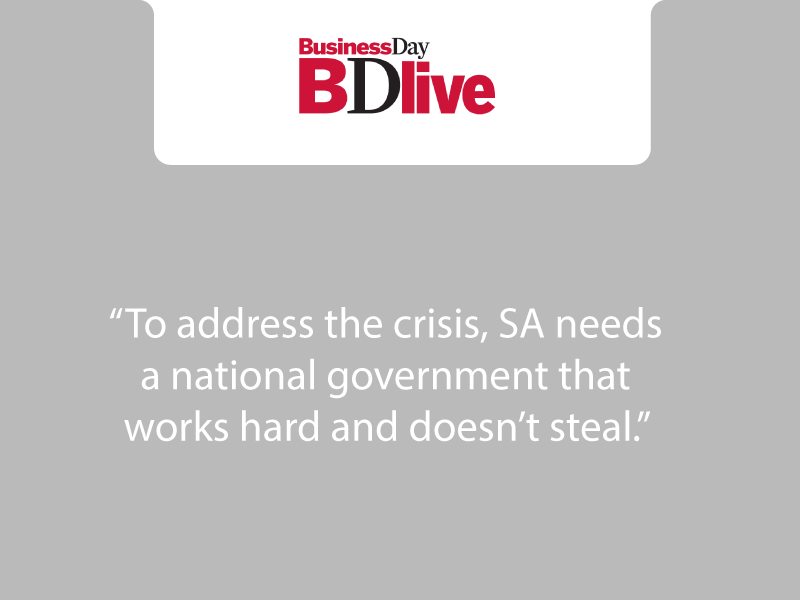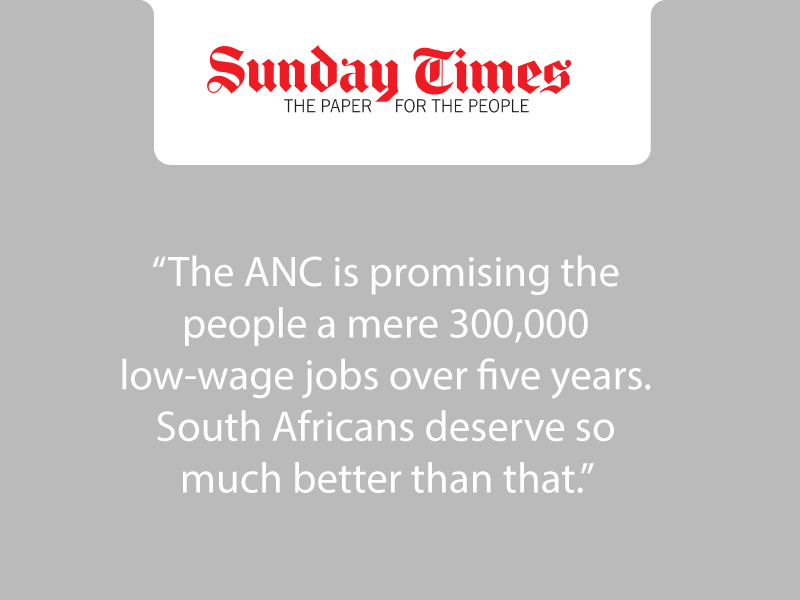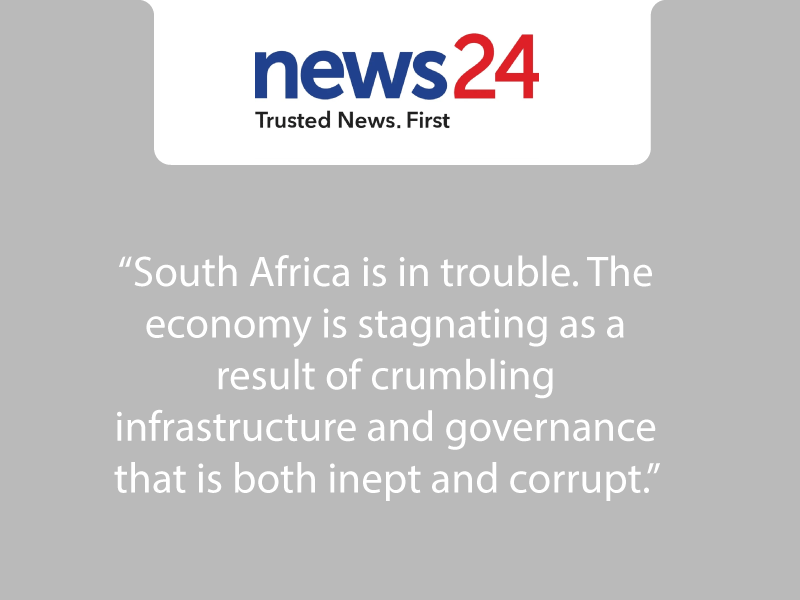
“Middle class” is defined differently in India, Brazil, and South Africa, but all three countries share the same need: for a second wave of reforms to make their middles classes less state-oriented and more entrepreneurial.
There are few prouder boasts for the government of an emerging economy to make than that it is “raising millions of citizens out of poverty.” It is a boast that several governments have made with confidence in recent years.
They are generally joined by a chorus of approval from boosters looking to promote the next great consumer market opportunity, and to reassure investors with the prospect of social and political stability that a large and growing middle class is conventionally assumed to guarantee. At the moment, the entire continent of Africa is receiving this kind of broad-brush treatment. Yet who exactly constitutes the “middle class”? As a study of India, Brazil, and South Africa shows, the answer varies from country to country, and sometimes within one. The question couldn’t be more crucial, however, for these countries’ chances of reaching the next rung of prosperity.
Definitions of the “Middle Class”
Inevitably, figures supporting the claims of an expanding middle class vary from study to study, yet some have achieved wide currency. For instance, the Workers’ Party (PT) in Brazil has been able to make enormous political capital in the last few years from the narrative of the country’s growing middle class, especially the claim—a favorite of President Rousseff’s—that “40 million Brazilians were lifted from poverty into the middle class between 2001 and 2011.”
Studies of the Brazilian middle class largely employ a definition developed by the federal government’s Secretariat for Strategic Affairs, which classifies people as middle class if they have the relatively low household income of between $161 and $564 per month. The growth of this “new middle class” has been impressive. Between 2001 and 2011 the proportion of people that could be thus classified grew from 35 percent to nearly 50 percent. In 2011 Brazil’s population was almost 197 million, so the middle class now consists of nearly 98 million people.
Black Brazilians account for 80 percent of new entrants into this class. People from rural areas and from the relatively impoverished northeast, along with workers in the informal sector and domestic servants, also account for a growing proportion. This increased social mobility has had an effect on Brazil’s extremely high rate of inequality: the income share of the new middle class and the poor has risen rapidly at the expense of the richest 10 percent. Between 2000 and 2009 the accumulated rate of real per capita income growth of the richest 10 percent was only 10 percent. By comparison, the real per capita income of the poorest 50 percent grew by 68 percent. The Brazilian poor averaged a Chinese-style growth rate of 6.8 percent per year during that period, a rate nearly six times greater than that of the traditional middle classes.
India has achieved significantly higher growth rates than Brazil and South Africa recently, but with a population of 1.2 billion it is much poorer than the other two. Gross national income (GNI) per capita in 2013 was $5,350, compared to South Africa’s $12,530 and Brazil’s $14,750.
To cope with the considerable variation between India’s middle class incomes and those of other countries, it is useful to employ a distinction between “local” and “global” middle classes. This allows analysts to assess the rate at which people are moving out of lower income quintiles, while also permitting an evaluation of the much smaller income group near the upper end, which has standards of living and aspirations comparable with middle classes in richer countries.
The “local middle class” consists of urban Indians earning between 75 and 150 percent of the median income. The local middle class makes up 40 percent of the urban population and consists of about 150 million people. The “global middle class” is defined as people in households that consume between $10 and $100 per person per day. About 12.5 percent of India’s urban population fits into this category, or about 50 million people. Together the two classes comprise some 200 million people, just under a fifth of the population.
The local middle class is more diverse and widely spread. It is split along language, ethnic and caste lines. Access to higher education is the key to becoming a member of the global middle class. People in this class are largely English-speaking and mainly upper caste. They are heavily concentrated in two states, Delhi and Maharashtra.
By global standards, unusually large numbers of both classes work in the informal sector. The proportion of the local middle class working in this way is 70 percent, and for the global middle class it is still very high, at 40 percent. Of course, the informal sector spans a wider range in India than in most other developing countries. Literally hundreds of laws push firms and people into informal, unregistered work.
In South Africa, researchers use two definitions to encompass very different income groups. The first is the “literal middle”, that is, the 4.2 million households that are middle class by virtue of being in the middle of the country’s income distribution. This group is made up of households with monthly per capita incomes between $190 and $570. They constituted 31 percent of the population in 2008. By comparison, those in the “relatively affluent middle” (a further 4.1 million households) find themselves in income brackets that are more typically middle class by global standards, ranging between $700 and $5,000. They constituted 30 percent of the population in 2008. Clearly this is far too wide a range of life circumstances from which to draw meaningful social and political generalizations.
Approaches other than measurement of income tend to find smaller middle classes in South Africa. The South African Advertising Research Foundation uses Living Standards Measures (LSMs), which include variables such as location (metropolitan, urban, rural), access to services (including financial services) and possession of consumer durables. It found that 23.5 percent of South Africans (about 12.2 million people) were middle class in 2010. It is interesting to note that in 2006 some 42 percent (19.9 million) of South Africans self-identified as middle class, according to the global World Values Survey.
The racial makeup of the middle class is also important. A study in 2012 by the Unilever Institute of Strategic Marketing, based at the University of Cape Town (UCT) defined black middle class adults as meeting at least three of four requirements: car ownership, a post-secondary degree, and a household income between $1,400 and $5,000 per month. It found that:
- The black middle class more than doubled between 2004 and 2012, from 1.7 million to 4.2 million individuals.
- The average monthly income for a black middle class household in 2012 was $2,100, compared to $2,500 for a white middle class household.
- The annual spending power of the black middle class is $42 billion, compared to $32 billion for the white middle class (3 million adults).
The myriad definitions and local peculiarities of middle classes in emerging democracies signal that changing patterns of growth, employment and the organization of work, as well as government-mandated schemes of redistribution, have transformed many of the traditional assumptions about and expectations of working and middle classes.
If our definition of middle class is so broad that almost everyone but the poor or the very rich is middle class, what has happened to the working class? “Working class” is as slippery a term as middle class. Organized labor’s assumption (especially powerful in South Africa) that the unemployed, the informal sector and semi-skilled, skilled and even lower professional workers in the formal sector can be covered by the uniform category “working class” simply does not fit reality. At the same time, people who are middle class in terms of their place in the income distribution and perhaps even by virtue of possessing post-secondary qualifications may be militant trade unionists.
The Politics of Emerging Middle Classes
The expansion of middle classes across the emerging world poses many tricky political questions, including that of apportioning credit for this success between state-led programs of redistribution (including affirmative action to remedy past exclusions) and market-driven economic reforms.
In Brazil and South Africa, market and state have both played roles. In both countries, long-term ruling parties have been in a position to claim the lion’s share of credit for the state. They have no room to be complacent, however. Beginning in 2013, several democracies across the emerging world were shaken by angry protests that were remarkable for their size and suddenness. What shook the governments most was that the people driving the protests were mainly the new middle classes, the beneficiaries of the economic growth and the government policies that had lifted them out of poverty.
Far from passively and gratefully enjoying their new status, however, citizens in Brazil, India, and elsewhere took to the streets to express their frustration with corruption, rising prices, poor services, and other grievances, and to demand more accountable government. This was a wake-up call to governments in several countries—most of which had been in power for multiple terms—not to take this growing constituency of upwardly mobile, mainly urban voters for granted.
South Africa has had its share of protests, many of them violent, by the poor and marginalized, mainly about corruption and failures of service delivery. The new middle classes are more tightly bound into South Africa’s ruling alliance, however, that those of other countries. Their militancy is more likely to be expressed through lobbying within it for increased affirmative action and empowerment policies as well as by organizing strikes and other forms of activism by public sector unions.
This spirit of challenge was carried over into the Brazilian and South African general elections of 2014, though without decisive result. Incumbent President Rousseff barely scraped home in Brazil, while in South Africa, the ANC’s massive majority was slightly dented nationally and more significantly impaired in the country’s main cities. However, such defection from the ANC as there was by different levels of middle class voters has proved difficult to interpret. It seems likely that such switched votes were shared between the liberal Democratic Alliance (DA) and the newly-founded, radical, populist, nationalist Economic Freedom Fighters (EFF)—a sign of dissatisfaction among the new middle class citizens, but not of organization.
In contrast, the Bharatiya Janata Party (BJP) won a landslide victory in the Indian election in 2014, and secured the first parliamentary majority by a single party in the lower house, the Lhok Sabha, since 1984. The party, which ran on an explicitly market-oriented, jobs, growth, and good governance platform routed the Indian National Congress, which had been in power since 2004. In contrast to the BJP, Congress had run an election campaign focused on expanded entitlements. There was a swing towards the BJP among all classes in India: just under 50 percent of the middle class voted for the BJP and over 50 percent of the upper class.
People who are at the middle of developed and developing countries’ income distributions may experience radically different living circumstances according to which they belong to, which makes comparisons and generalizations difficult. The middle classes of the U.S. and Europe may be “stressed” or “struggling”, but the economic hazards and deficits of good public services experienced by the “fragile” middle classes of Latin America and Africa, who risk relapsing into poverty, are of a different order.
What is less well understood is that generalizations are as difficult to make across emerging economies as they are between emerging and advanced ones. This means that there is no reliable template of the implications for democracy and economic growth of the expansion of middle classes in (relatively) fast growing middle-income countries, never mind in the developing world as a whole.
South Africa provides a good example of this.
A Militant Middle Class
Growth in South Africa’s new middle class has been driven very largely (but not exclusively) by expansion in numbers of public servants and their ability in recent years to achieve above-inflation wage increases unrelated to productivity.
In short, South Africa’s public servants are numerous and comparatively well remunerated. This is largely because they are highly unionized and trade unions wield political power quite disproportionate to their numbers in the population by virtue of the main trade union federation, the Congress of South African Trade Unions (Cosatu), being embedded in the ruling ANC Alliance.
In 2013, 1.25 million people worked for national and provincial governments. This was a 25 percent increase over the 2005 figure, although to some extent this represented a recovery after job losses in the period of fiscal retrenchment between 1996 and 2000. The increase was also due to the fiscal space allowed by a period of sustained economic growth between 2000 and 2009. If employees of municipal government and state-owned enterprises are added, the figure is 1.96 million, representing about one in seven of South Africans in formal employment (13.7 million).
The public sector wage bill is the largest component of government expenditure. In the 2014–5 budget, R450 billion was earmarked for the wage bill, 36 percent of the 1.25 trillion budget. This was an improvement on the 40 percent in the 2013 budget and 45 percent in the 2011 budget, indicating the importance of a three-year wage deal, concluded in 2012, in controlling public sector remuneration.
In its 2015 Budget Review, the National Treasury (the Ministry of Finance) noted that “most” public servants were in the top 30 percent of earners nationally. Cosatu’s own figures in 2013 revealed that over half its members earned more than $500 a month, which in a country where nearly 40 percent of the potential labor force is unemployed, or has left the labor market in discouragement, is a comparatively substantial salary.
Take schoolteachers, for example. In 2011 the National Planning Commission (the body responsible for the government’s flagship National Development Plan) reported that South African teachers are, in terms of purchasing parity, among the highest paid in the world. Over 80 percent of South Africa’s 425,000 teachers and lecturers belong to trade unions: 240,000 of them belong to the Cosatu-affiliated South African Democratic Teachers Union (SADTU). SADTU is the biggest public sector union in the federation, which has become largely dominated by public sector unions, whose members are middle class by any of the definitions in common usage. In 2014–15, the education budget accounted for 20 percent of government expenditure: salaries, the overwhelming amount for teachers, take up 78 percent of this expenditure.
Rating agencies and international financial institutions have identified the expanding public sector wage bill as the greatest threat to the country’s fiscal stability. Negotiations began in late 2014 for an agreement to replace the 2012 deal, which has now lapsed. The unions’ initial demand was for an increase of 15 percent (three times the current inflation rate) for a one year deal and a more than tripling of the housing subsidy, which helps public servants to buy homes—a typical South African middle class benefit. The government offered 5 percent in each of three years.
Over six months of standoff followed during which it became clear that a settlement substantially above inflation for only one year could trigger a downgrading of South Africa’s sovereign debt to junk status. The government’s stance was that any such settlement would be paid for by shrinking the size of the public service. In the end, the public servants settled for 7 percent in the first year of a three-year settlement, inflation plus 1 percent in the two subsequent years and a 30 percent increase in housing subsidy. In 2007 and 2010 public servants went on strike for more than three weeks in each case. Strike action was avoided this year, possibly due to the unions’ awareness of the macroeconomic consequences. However the combination of wildly unrealistic militancy followed by acceptance of much more modest gains, without any concessions to productivity typifies the instability of “middle class” industrial relations in South Africa.
South Africa provides an unusually good example of how diverse middle classes can be and how varied their political roles are in a democracy. In each of the three countries described here, new middle classes have made it plain that they cannot be taken for granted by governments—no matter how much these rulers claim that their policies have legislated these classes into existence—nor do they make generalizations about democracy, growth, and middle classes easy to draw up.
One conclusion that the South African example does invite, however, is that middle-class growth too heavily biased toward the public sector is dangerous. This in turn highlights the importance of structural reforms, which all three of these developing democracies neglected in their years of (relatively) high growth. It is these economic reforms that will encourage the growth of a more independent, less state-oriented, more entrepreneurial middle class that is less of a special interest and more of a force for accountability.
For this to happen, all three countries now need a second wave of remarkably similar and bold reforms: a deepening of democracy, transparency, and accountability; further market liberalization; a more competent state with a positive attitude toward business; and a new approach to expanding opportunities for the poor. These policies will return a higher, more inclusive growth and ensure political stability, both greater achievements to boast about even than an expanding middle class.
- CDE Executive Director Ann Bernstein published an article in a leading international magazine, The American Interest, titled “Will the Real Middle Class Please Stand Up?”




